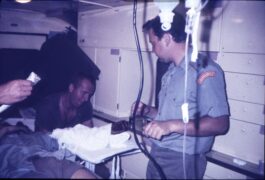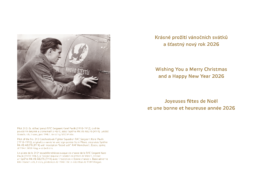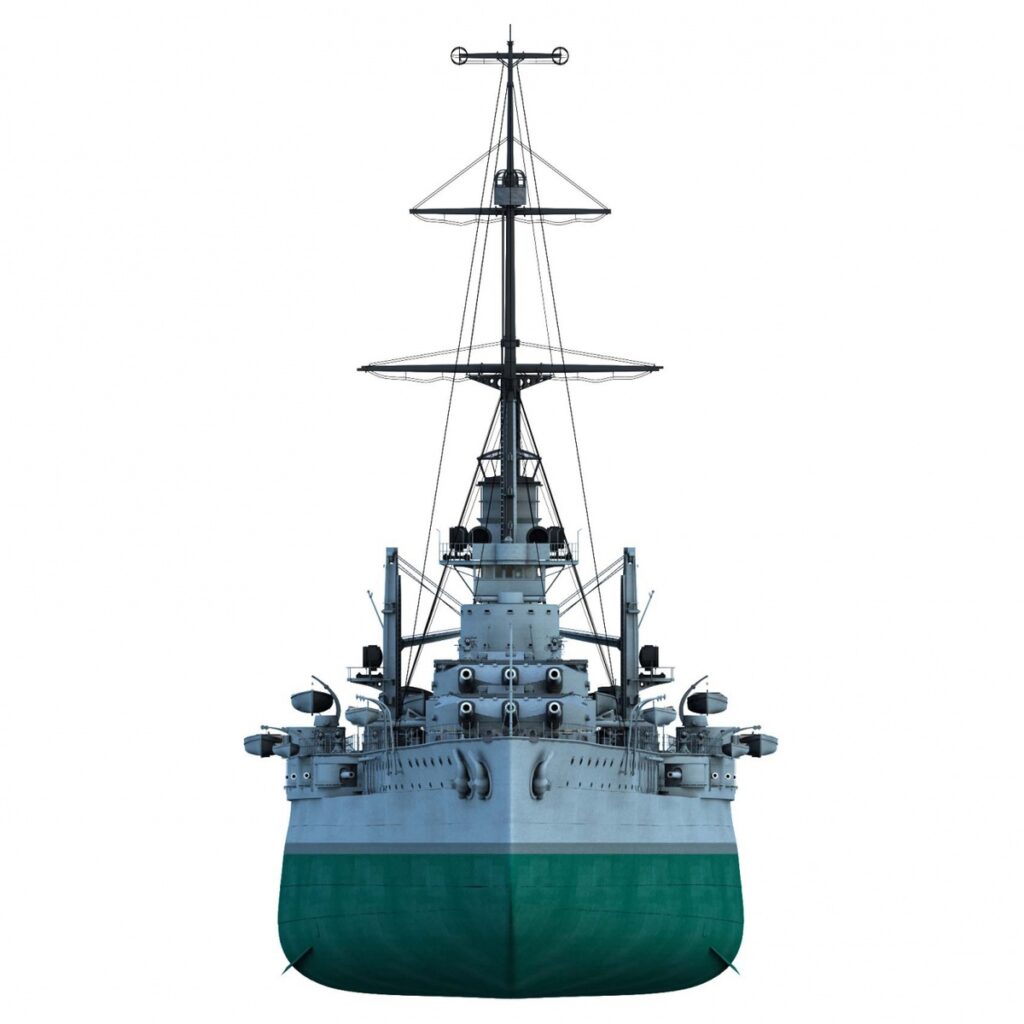
12 Austro-Hungarian Battleship SMS Szent István
Fotogalerie
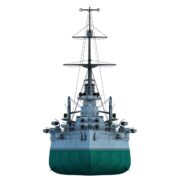


The Austro-Hungarian Navy was isolated in the Adriatic Sea, where fighting occurred only on a minor scale. At the beginning of the war, it had a wide range of vessels, from the most modern dreadnought-type battleships to armoured cruisers, destroyers, gunboats, and submarines, to obsolete cruisers from the late 19th century.
SMS Szent István was a Tegetthoff-class dreadnought of the Austro-Hungarian Navy whose construction began on 29 January 1912 at the Ganz & Company Danubius shipyard in Rijeka. Szent István was initially scheduled to be delivered in July 1914, but the ship's delivery was delayed by 17 months. The ship had to be finished at the military arsenal in Pula, where it was towed after the outbreak of war. It entered service on 17 November 1915. The ship's main armament consisted of 12 guns of 30.5 cm calibre, mounted in four three-gun turrets. The maximum range of these guns was 25,000 m.
Szent István was visually distinguished from its sister ships, Tegetthoff, Viribus Unitis, and Prinz Eugen, built in the Trieste shipyards, by the platform connected the mainmast to the two funnels. Several searchlights were placed on this platform.
Szent István's home port was Pula. Szent István took part in several incursions during the war, mainly related to the shelling of the Italian coast. On the night of 9 June 1918, Szent István sailed with Tegetthoff, the destroyer Velebit, and six torpedo boats to attack the Austro-Hungarian Navy's blockade of the Strait of Otranto. This blockade kept Austro-Hungarian ships confined to the Adriatic Sea, especially submarines. On 10 June 1918, off Premuda Island, the Italian torpedo boats MAS 15 and MAS 21 attacked this group. Eighty-nine crew members were killed and 29 injured.
The displayed model is in a 1:100 scale.
Aktuálně
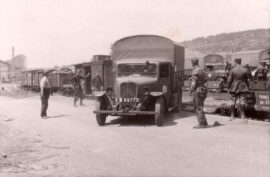
Oceňovaní spojenci - Pozemní útvary československé branné moci v bitvě o Francii očima francouzského velení

Vánoce a přelom roku v zahraniční misi na Slovensku v roce 2022

Prosinec 1944 – oficiální vydání prvních poštovních známek osvobozeného Československa
